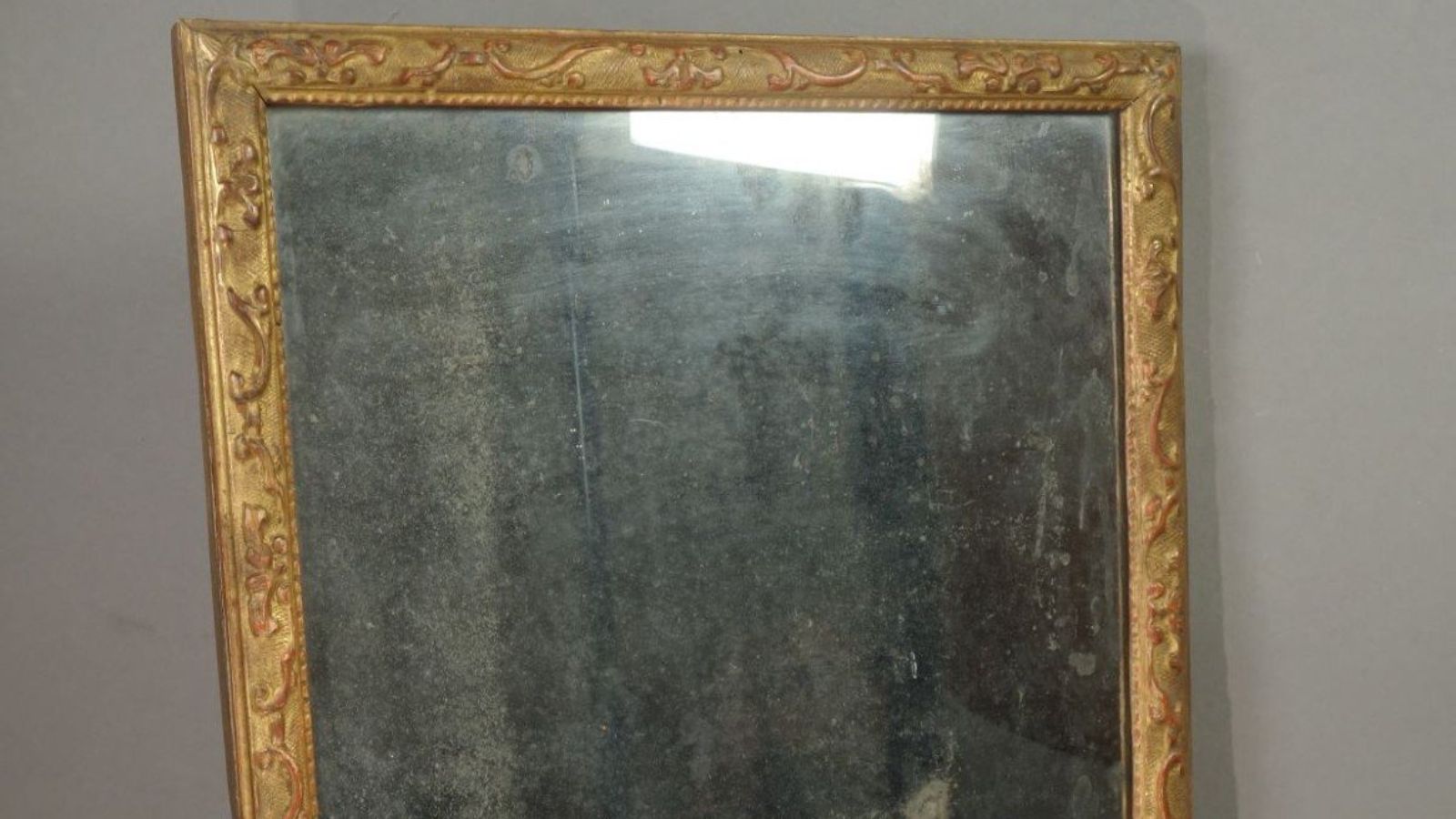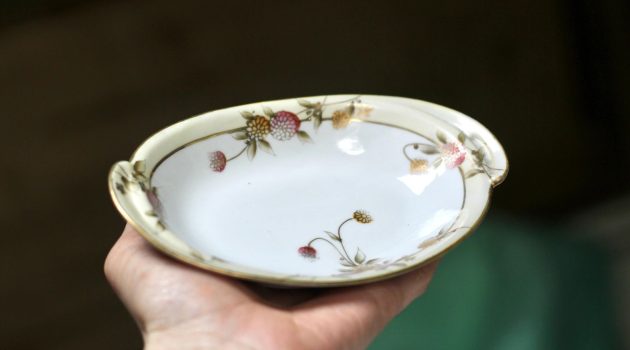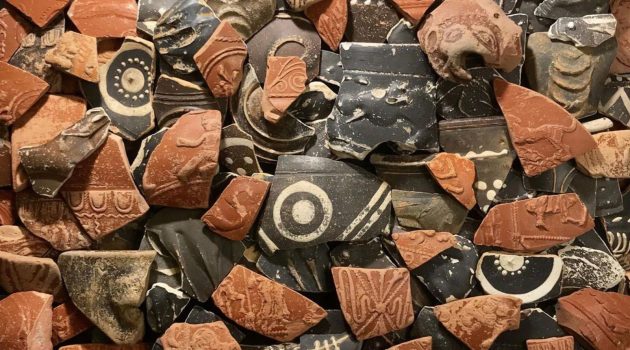Have you ever wondered if that old mirror in your attic might be special? Mercury mirrors were once prized possessions, but they can be tricky to spot. Let’s explore how you can tell if you’ve got one of these rare treasures.
To identify a mercury mirror, look for a thin layer of paint on the back and signs of aging or oxidation. The glass itself might have a unique sparkle or a slightly cloudy appearance. These mirrors often have imperfections like unevenness or tiny bubbles in the glass.
Mercury mirrors are fascinating pieces of history. They were expensive to make and came in smaller sizes than modern mirrors. While they’re beautiful, it’s important to handle them carefully. Mercury is toxic, which is why this mirror-making method isn’t used anymore. If you think you’ve found one, treat it gently and consider having an expert take a look.
Understanding Antique Mirrors

Antique mirrors add timeless elegance to any space. They come in different styles and were made using special methods long ago.
Types of Antique Mirrors
Antique mirrors come in many forms. Hand mirrors are small and portable. You can hold them easily to check your appearance.
Cheval mirrors are tall and stand on their own. They let you see your whole outfit at once.
Wall mirrors range from small to very large. Some have ornate frames with intricate designs.
Venetian mirrors are famous for their beautiful glass work. They often have etched patterns or colorful details.
Historical Manufacturing Methods
Old mirrors were made differently than today’s. Craftsmen used a mix of tin and mercury to create the reflective surface.
This process gave mirrors a unique look. The glass had a slightly gray or yellow tint.
Over time, the mercury could oxidize. This created cloudy spots or blotches on the mirror.
Imperfections like bubbles or waves in the glass are common in antique mirrors. These little flaws show the mirror’s age and history.
Frames were often handmade too. Woodworkers carved detailed designs into wooden frames.
Identifying Mercury Mirrors

Mercury mirrors have unique traits that set them apart from modern mirrors. They were made using special techniques that give them a distinct look. Let’s explore how to spot these antique treasures.
Characteristics of Mercury Mirrors
Mercury mirrors often have a sparkly, crystalline appearance. This effect comes from the aging of the reflective surface. Look at the glass closely. You might see tiny dark spots or a slightly cloudy look. These are signs of mercury oxidation.
Check the back of the mirror too. It may have a thin paint layer protecting the reflective coating. This layer might look worn or uneven on older mirrors. The frame can offer clues as well. Antique mercury mirrors often have wooden backs or ornate metal frames.
The Tin-Mercury Amalgam Process
The tin-mercury amalgam process was used to make mirrors from the 16th century onwards. Here’s how it worked:
- A thin layer of tin was spread out.
- Mercury was poured over the tin.
- Glass was carefully placed on top.
- The mercury and tin reacted, sticking to the glass.
This method created mirrors with a deep, liquid-like shine. Over time, the mercury could form droplets or create a cloudy effect. These changes help you spot genuine antique mercury mirrors today.
Signs of Age and Authenticity

Old mercury mirrors have unique signs that show their age and prove they’re real. These signs can help you spot a true antique and know its value.
Recognizing Signs of Aging
Look for a patina on the mirror’s surface. This is a thin layer that forms over time. It might look cloudy or have a slight color. Check the edges and corners for wear or chips. These spots often show age first.
Oxidation is another clue. The backing may look spotty or have dark patches. This happens when air touches the mercury over many years. Some parts might look cloudy or have a foggy look. This is normal for old mirrors.
Determining Authenticity Through Imperfections
Real antique mirrors often have small flaws. Look for tiny bubbles in the glass. These form during old glass-making methods. Wavy or uneven surfaces are good signs too. Modern mirrors are usually perfectly flat.
Check for an uneven reflection. Old mirrors might make things look slightly warped. This is because of how they were made long ago. Look closely at the back. You might see a thin layer of paint or other material. This was used to protect the mercury coating.
- Small scratches or marks
- Irregular shapes or sizes
- Hand-cut edges (not too perfect)
These imperfections add charm and prove the mirror’s age. Engraved labels or maker’s marks can also help verify authenticity. Look for these on the frame or back of the mirror.
Assessing Value and Craftsmanship
The value of antique mercury mirrors depends on several factors. Craftsmanship and design play big roles in how much they’re worth.
Factors Influencing Antique Mirror Value
Age is a key factor in a mirror’s value. Older mirrors from the 18th or 19th century often cost more. The mirror’s condition matters too. Mirrors with less damage fetch higher prices.
The frame’s material affects value. Wooden frames made of walnut or mahogany are prized. Gilded frames with gold or bronze can be very valuable.
Unique designs boost worth. Mirrors with cherubs, nature scenes, or shell carvings are special. Oval shapes are common in antique mirrors and can add value.
Famous makers’ mirrors cost more. Look for labels or marks that show who made it.
Size matters too. Larger mirrors are often pricier.
Evaluating Craftsmanship and Design
Good craftsmanship shows in the details. Check how well the frame fits the glass. Look for smooth joints and even gilding.
Hand-carved designs are a sign of quality. They should be crisp and clear, not fuzzy or uneven.
The glass itself is important. Old mercury glass may have a wavy surface. It might look cloudy or have dark spots. These are signs of age, not poor quality.
The back of the mirror can tell you a lot. Old mirrors often have a thin paint layer protecting the mercury. This layer may look worn or uneven.
Check for beveled edges on the glass. This was a popular style and shows extra work.
Bold designs or unusual shapes can make a mirror more valuable. But they should fit the style of the time when the mirror was made.
Advanced Techniques for Verification
Experts use specialized methods to verify old mercury mirrors. These tools help check if a mirror is truly antique and made with mercury.
X-Ray Fluorescence (XRF) Analysis
X-ray fluorescence (XRF) is a powerful tool for identifying mercury mirrors. This test uses x-rays to detect the elements in the mirror’s coating. XRF can find mercury without damaging the mirror. It’s very accurate and can tell how much mercury is present.
You can ask an antique expert or museum to do XRF testing. They’ll use a handheld device that looks like a large gun. It sends x-rays into the mirror and reads what bounces back. The results show up on a screen, listing all the elements found.
XRF can also spot fake antiques. If a mirror claims to be old but XRF doesn’t find mercury, it’s likely not authentic.
Assessing Reflectivity and Patina
You can also check a mirror’s age by looking at its surface. Mercury mirrors have a unique shine and age differently than modern ones.
Look for a soft, slightly cloudy reflection. Mercury mirrors aren’t as sharp as new ones. They give a dreamy look to your image. This effect gets stronger with age.
Check for dark spots or a smoky look. This is called patina. It forms as the mercury oxidizes over time. Real patina can’t be faked easily.
Gothic mirrors often have heavy patina. You might see dark streaks or blotches. This adds to their spooky charm and proves their age.
Feel the glass surface. Old mercury mirrors are often not perfectly flat. You might notice small bumps or waves.



